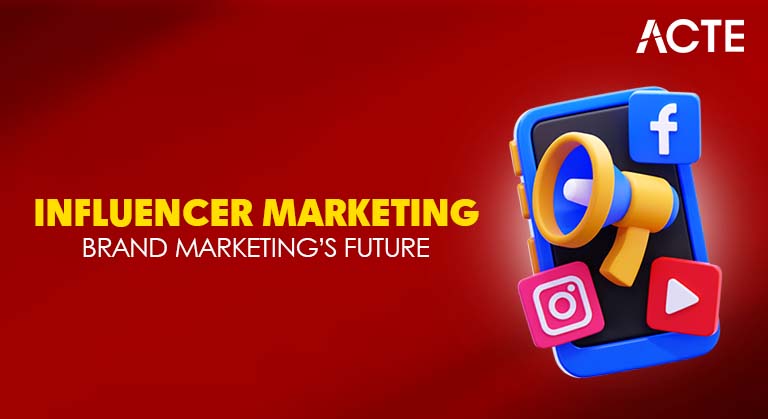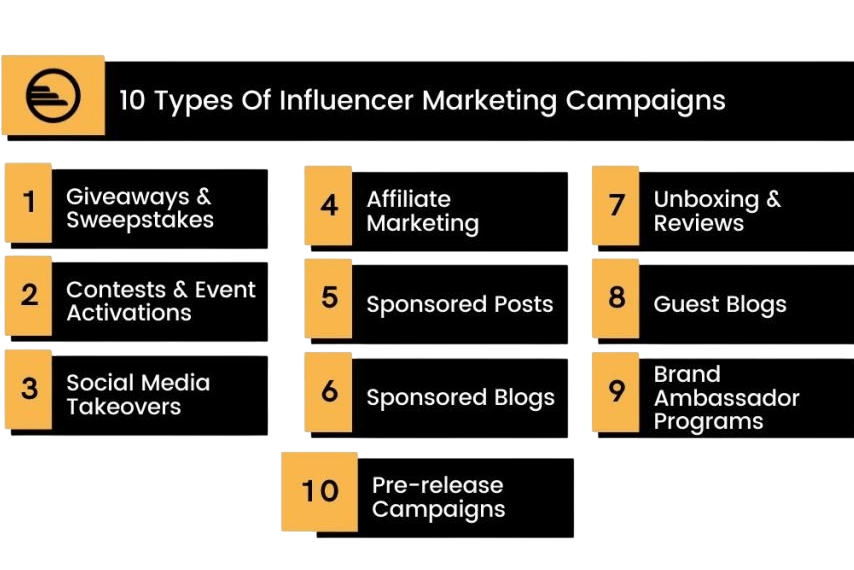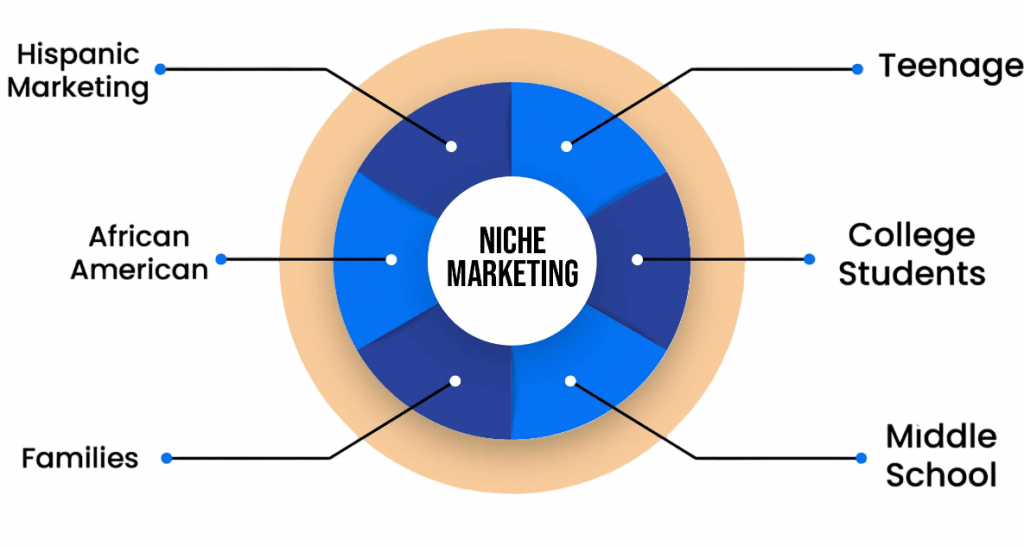
- What is Influencer Marketing?
- Types of Influencers
- Choosing the Right Influencer
- Outreach Strategies
- Contracts and Compensation
- Measuring ROI
- Influencer Marketing Platforms
- Legal and Ethical Considerations
- Sponsored vs Organic Content
- Niche-Based Strategies
- Case Studies
- Future of Influencer Marketing
What is Influencer Marketing?
Influencer marketing is a strategic approach to promoting products, services, or brands through individuals who have a dedicated social following and are viewed as experts within their niche. These influencers have the power to affect purchasing decisions because of their authority, knowledge, position, or relationship with their audience a dynamic thoroughly examined in Digital Marketing Training, where learners explore influencer credibility, audience psychology, and strategic collaboration to drive brand engagement and conversions. The rise of social media platforms like Instagram, YouTube, and TikTok has significantly increased the relevance of influencer marketing. Brands now collaborate with influencers to create authentic content that resonates with the target audience, thus enhancing brand visibility, trust, and engagement.
Ready to Get Certified in Digital Marketing? Explore the Program Now Digital Marketing Online Training Offered By ACTE Right Now!
Types of Influencers
Keyword research can go wrong if not executed properly. Here are some pitfalls to avoid: relying solely on search engine data without considering platform-specific behavior, ignoring conversational context, and misinterpreting user intent mistakes highlighted in All the Social Media Apps You Should Know, where marketers learn how keyword trends vary across platforms like Instagram, TikTok, and LinkedIn, and how to tailor research methods to match each app’s unique audience dynamics.
- Keyword Stuffing: Overusing keywords disrupts readability and leads to penalties.
- Ignoring Search Intent: Targeting the wrong intent leads to poor engagement.
- Focusing Only on High Volume: Ignoring relevance and difficulty affects ROI.
- Neglecting Long-Tail Keywords: Missing out on high-conversion traffic.
- Lack of Content Alignment: Keywords must fit naturally within content.
Avoiding these mistakes ensures a more strategic and effective keyword implementation.
Choosing the Right Influencer
When you choose the right influencer for your brand, you need to do a careful evaluation. Start by looking at several key factors, starting with relevance. This ensures that the influencer’s content genuinely matches your brand values and target market. Instead of just counting followers, smart marketers look at demographics and engagement rates. This helps them understand the real reach of an influencer, showing their actual impact online. Authenticity is crucial since audiences now prefer genuine content over obviously promotional messages. You also need to assess content quality, including the creativity, tone, and production value of the influencer’s posts criteria increasingly prioritized in Google Algorithm Changes, where updates emphasize E-E-A-T (Experience, Expertise, Authority, Trust), penalize superficial content, and reward creators who deliver insightful, well-produced, and emotionally resonant material aligned with user intent. To make this selection process easier, professionals use tools like BuzzSumo, Traackr, and Upfluence. These tools offer solid analytics for finding and evaluating potential partnerships. Additionally, conduct thorough checks on past campaigns and collaborations to ensure consistency and reliability. This approach will help your brand build meaningful influencer relationships that connect with your target audience.
To Explore Digital Marketing in Depth, Check Out Our Comprehensive Digital Marketing Online Training To Gain Insights From Our Experts!
Outreach Strategies
Approaching the right influencer requires a tactful and personalized strategy an outreach principle explored in What Is Content Marketing, where marketers learn to identify aligned creators, craft value-driven pitches, and build authentic relationships that amplify brand messaging. By tailoring outreach to the influencer’s niche, audience, and communication style, businesses foster trust and collaboration that drive engagement, backlinks, and long-term visibility.
- Personalized Messaging: Refer to specific posts or traits to show genuine interest.
- Value Proposition: Clearly state what the influencer will gain, whether monetary or experiential.
- Professional Communication: Use formal language and contracts to establish credibility.
- Follow-Up: Respect their time and follow up if they don’t respond initially.
- Offer Creative Freedom: Allow them to interpret the brief in their authentic voice.
Building long-term relationships rather than one-off collaborations yields better results and fosters mutual trust.
Contracts and Compensation
In the fast-changing world of influencer marketing, brands need to set up a clear and formal agreement for successful collaborations. A well-written contract should clearly outline the scope of work. This includes details about deliverables, targeted platforms, content formats, and specific deadlines contractual precision emphasized in Digital Marketing Training, where learners master project scoping, timeline alignment, and platform-specific execution to ensure clarity and accountability in digital engagements. Compensation can vary a lot. Brands may offer flat fees, performance-based payments, or product exchanges. Right Influencer sets their rates based on their audience size, engagement metrics, and current market trends. Clear usage rights are also important because they determine who owns the content and how it can be reused. Both parties must follow FTC disclosure rules. To protect brand interests, contracts should specify exclusivity terms. This prevents influencers from promoting competitor products during and right after the campaign. Platforms like Social Bluebook can offer helpful insights for brands to estimate fair compensation rates. This way, both parties can work together in a transparent partnership that meets their goals.
Looking to Digital Marketing Training? Discover the Digital Marketing Expert Masters Program Training Course Available at ACTE Now!
Measuring ROI
The success of influencer marketing must be quantified through key performance indicators (KPIs):
- Engagement Rates: Likes, shares, comments, and saves.
- Reach and Impressions: Number of unique viewers.
- Conversions and Sales: Trackable links and discount codes help attribute sales.
- Brand Mentions: Use social listening tools to monitor brand buzz.
- Follower Growth: Increase in your social media following during the campaign.
A combination of analytics tools (Google Analytics, Hootsuite, HubSpot) and influencer reporting is vital for accurate measurement.
Influencer Marketing Platforms
In the fast-changing world of digital marketing, brands are increasingly working with influencers through platforms like Upfluence, AspireIQ, GRIN, Heepsy, and CreatorIQ collaboration hubs that amplify Display Advertising, where visual campaigns are enhanced by influencer-generated content, targeted placements, and performance analytics that drive reach, engagement, and ROI across paid media channels. These tools change how influencer marketing works by providing strong solutions, including detailed analytics, targeted discovery, and easy campaign management.

Brands can quickly find, connect with, and track influencers across different niches and locations. They use Upfluence’s rich influencer insights, AspireIQ’s relationship-building tools, and GRIN’s e-commerce-focused workflows. CreatorIQ stands out with its enterprise-grade platform, offering advanced analytics that help businesses measure campaign performance and ROI accurately. By using these platforms, marketers change influencer partnerships from traditional promotions into smart, data-driven collaborations that create real engagement and achieve solid business results.
Preparing for Digital Marketing Job Interviews? Have a Look at Our Blog on Digital Marketing Interview Questions and Answers To Ace Your Interview!
Legal and Ethical Considerations
Legal and ethical compliance is crucial in influencer marketing. Key considerations include:
- Disclosure: Influencers must label sponsored content with #ad or #sponsored.
- Privacy: Compliance with data protection laws (GDPR, CCPA) is mandatory.
- Authenticity: Avoid fake followers or engagement.
- Contractual Obligations: Clearly defined deliverables prevent disputes.
Educating influencers on your brand’s code of conduct and maintaining transparency builds long-term credibility.
Sponsored vs Organic Content
Marketers need to grasp the complex nature of content creation. Brands pay for sponsored content, which is clearly labeled; however, it is quite different from organic content that comes from genuine interest. This difference greatly affects how effective marketing can be especially when aligned with SEO Strategies to Avoid Major Google Penalties, where marketers learn to distinguish between compliant optimization and risky tactics, adapt to algorithm updates like Panda and Penguin, and implement sustainable practices that preserve rankings and long-term visibility. Trust is essential because audiences naturally find more credibility in organic endorsements that seem real and not manipulated. Moreover, algorithm-driven platforms often limit the visibility of overtly sponsored content, reducing its reach and impact. On the other hand, organic posts usually last longer, providing value well after their initial release. Smart marketers are increasingly using a mixed approach. They strategically team up with influencers who truly appreciate their products, creating a link between sponsored messages and genuine recommendations.
Niche-Based Strategies
Tailoring influencer campaigns to niche markets enhances relevance and engagement. Examples include:
- Fitness Influencers for Health Products
- Tech Influencers for Gadgets and Software
- Parenting Bloggers for Baby Products
- Travel Influencers for Tourism and Hospitality
Working with niche influencers helps target specific audiences with a higher likelihood of conversion.

Case Studies
- Daniel Wellington: Leveraged thousands of micro influencers to drive global brand awareness.
- Glossier: Built a cult following by empowering regular users as brand advocates.
- Gymshark: Combined athlete influencers with everyday fitness enthusiasts for viral campaigns.
- HelloFresh: Partnered with lifestyle influencers to showcase easy cooking experiences.
Each of these brands saw measurable increases in engagement, followers, and revenue through strategic influencer campaigns.
Future of Influencer Marketing
The landscape of influencer marketing is changing as new trends shape brand engagement strategies. Nano and micro influencers are gaining popularity, providing brands with higher engagement rates and more genuine connections with audiences. The growth of video-focused platforms like TikTok and Instagram Reels speeds up this change, offering exciting content opportunities a shift explored in Digital Marketing Training, where learners harness short-form video strategies, platform-specific storytelling, and audience engagement techniques to thrive in the evolving digital landscape. Meanwhile, AI algorithms are transforming influencer discovery, allowing brands to create more accurate and strategic partnerships. As the industry develops, increased regulatory attention brings stricter disclosure rules, which foster transparency and trust. Notably, the rise of virtual influencers, which are AI-generated characters, marks a new area in digital marketing. By carefully navigating these trends, brands can find new chances to improve ROI and build meaningful relationships with their target audiences, keeping them at the leading edge of this fast-changing marketing world.




